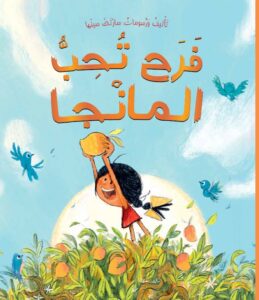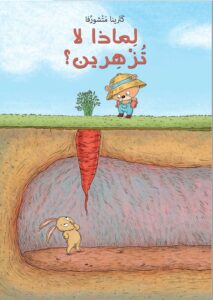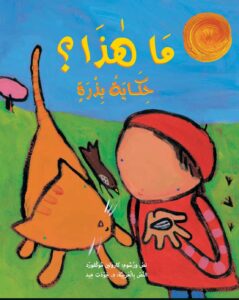Let’s talk...
About different feelings: we can ask our child: Why do you think Farah loves mangoes so much? How did Farah feel when she found no fruit on the tree, and how did her feelings change at the end of the story? What was Farah’s new discovery about the mango tree?
About similar experiences: we can our child: Do you have a favourite fruit or food like Farah? What is it, and why do you like it?
About desires: Farah tried in many ways to get what she loves. We can ask our child: Have you ever wanted something very badly and couldn’t get it? How did you handle it?
Let’s enrich our language...
We can examine the colour-rich illustrations with our child and describe what we see, especially the tree’s hidden world
Let's taste...
We can prepare a healthy snack of mango slices mixed with yogurt together, adding a little honey or granola. We can talk about the importance of healthy eating and what we like to eat from it
Let's connect with nature...
We can encourage our child to contemplate the nature around us and discover its hidden worlds. What hides under the stone, between tree branches, inside the earth, or in a small water pond?
Let's move...
We can imitate Farah’s movements while searching for mangoes–we can imagine we’re climbing trees, picking fruit, digging the earth, walking in the garden, giving the tree milk, and wrapping the scarf around it.
Let's research...
The story takes place in India. How can we tell that from the story?
In India, there are different names for mangoes, and in our country, there are different names for olives. Do you know what they are?
Let’s talk...
About trying and experimenting: The bear planted seeds that blossomed into similar flowers, except for one plant that didn’t bloom. Nevertheless, he didn’t give up, he took care of it, and provided all the necessary conditions. We can ask our child: Have you ever tried something and didn’t get what you wanted? How did you feel? What did you learn? Did you change something during your attempt, as the bear did?
About differences: Children enjoy planting seeds and observing their growth. This is an opportunity to talk to our child about the conditions for the growth of each type of plant (the amount of water and light it needs) and about what is common and different in the growth of each type.
About different perspectives: We can follow the drawings in the story and compare the rabbits and the bear. We can ask our child what the bear might be thinking about the plant, and what the rabbits might be thinking. Why do they have different ways of thinking?
Let’s enjoy leaning...
Caring for plants requires the ability to wait and to be patient, a skill which our child may still lack. We can support them in developing this skill by agreeing to perform specific daily tasks that suit their abilities, such as watering the plant or measuring its height with a small ruler and marking it. Imagine how happy your child will be when they share in making a healthy dish from vegetables they planted in a pot on the balcony or in a garden bed!
Let’s enrich our language...
In the book, there are two stories happening at the same time. We can enhance our child’s narrative ability by thinking up stories. We can look at the drawings and creatively add alternative endings of our own.
With the child...
With the child in the book, we follow the growth process of the sunflower: What helped the seed to grow to become a beautiful flower?
Every seed has...
Every seed has a different growth story. Children enjoy the experience of planting different types of seeds and watching each one grow differently. This is an opportunity to talk with your child about the environment that each seed needs to grow in (such as how much water and light), and about the commonalities and differences among seeds.
Children see...
Children see the high trees and big plants around them. We can explore the source of each plant starting from the seed. It is an opportunity to visit the nearest nursery to learn about different types of plants and trees in different growth level.
A cat and a bird...
A cat and a bird accompanied the girl as she was taking care of the plant. They asked questions, they consulted. Let’s look at our role as parents: do we accompany our child’s exploring, and how?
The protagonist...
The protagonist tells the plant some of her secrets, although the latter does not hear. Does it happen sometimes that we talk to our toys, dog or cat? When does it happen?
Taking care of...
Taking care of plants demands a lot of patience and waiting, something that a 3 or 4 years old child lacks. We can help children develop this ability by making them, with their approval of course, do some daily tasks that fit their abilities, such as watering plants or measuring their height. Children would very happy to make a plate of vegetables from those that they plant themselves.
All creatures grow...
All creatures grow and so do we! We can invite our child to look at his growth process by measuring his height or weight every once in a while, and have a conversation about the factors that cause our body to grow.
 Farah Loves Mangoes
Farah Loves Mangoes  Why Don’t You Bloom?
Why Don’t You Bloom?  What’s This?
What’s This? 
